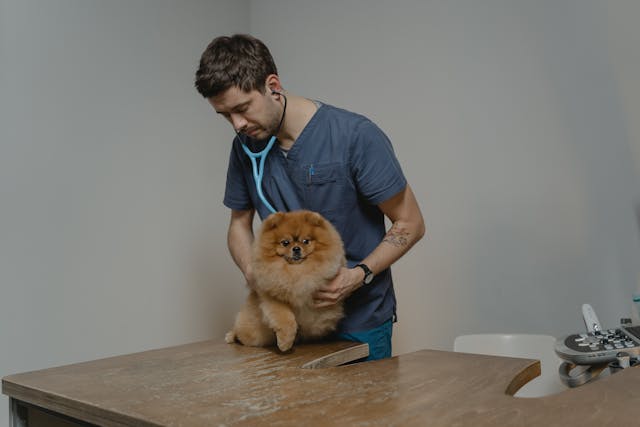Veterinary clinics serve as safe havens for pets and animals needing care—but without proper pest control, these environments can quickly become hazardous. Unlike homes or traditional office spaces, veterinary facilities deal with fur, waste, food, medications, and high traffic from animals and humans alike. These conditions can attract a wide range of pests—from ants and cockroaches to rodents and flies—that pose serious risks to animal health, cleanliness, and the clinic’s professional reputation.
Effective pest control in a veterinary setting isn’t just about maintaining appearances—it’s a matter of protecting vulnerable patients, preventing disease transmission, and upholding strict hygiene standards. Here’s why pest control should be a top priority in vet clinics and how to do it right.
Why Veterinary Clinics Are Prone to Pest Problems
Veterinary clinics are unique in that they combine healthcare operations with animal care, making them particularly attractive to pests. The presence of pet food, water bowls, and organic waste creates a perfect environment for pests looking for shelter, moisture, and food sources. Exam rooms, treatment areas, kennels, and waiting rooms all offer plenty of hiding places for insects or rodents.
Even the most well-maintained clinics can face pest problems due to the constant opening and closing of doors, high turnover of pets and people, and exposure to outdoor elements. Additionally, the stress and illness that many animals experience during visits can lower their immune response—making pest-borne illnesses even more dangerous in these settings.
The Risks Posed by Pests in Animal Care Facilities
Pests are not just an inconvenience—they’re a real threat in medical and care environments. Rodents can chew through wires, insulation, and medical supplies, while spreading diseases like leptospirosis or hantavirus. Flies and cockroaches can carry bacteria that contaminate food, surfaces, and instruments, potentially affecting both animals and staff.
Fleas, ticks, and mites are especially concerning in vet clinics because they can spread between animals or infest bedding, examination tables, and treatment rooms. Even minor pest activity can quickly snowball into an outbreak, putting animals at risk and causing financial and reputational damage to the clinic.
Moreover, pest infestations can trigger failed health inspections, temporary closures, or client complaints—none of which any veterinary clinic can afford.
Preventive Cleaning as the First Line of Defense
Sanitation plays a critical role in pest prevention. Regular and thorough cleaning reduces the availability of food, water, and shelter—making the clinic far less appealing to pests. Veterinary teams should have daily cleaning protocols for all areas, including exam rooms, surgical suites, boarding areas, and even staff break rooms.

Pet food and treats should be stored in sealed containers, and spills should be cleaned up immediately. Trash bins should have tight-fitting lids and be emptied regularly. Waiting areas and kennels should be disinfected between each use to remove hair, urine, feces, and dander that might attract insects or rodents.
High-touch areas like countertops, scales, and door handles should be sanitized frequently—not just for pest control, but also to prevent cross-contamination between patients. In addition, exterior areas such as walkways, storage sheds, and dumpsters should be kept clean and sealed to prevent attracting pests to the building’s perimeter.
Structural Maintenance and Sealing Entry Points
Pests often enter clinics through small cracks, gaps around doors or windows, or utility openings. Regular inspections of the building’s exterior are essential to identify and seal any potential entry points. This might include installing door sweeps, sealing around pipes, adding mesh screens to vents, or repairing damaged siding or foundation gaps.
Weather changes can also cause building materials to expand or contract, opening new pathways for pests. By implementing routine maintenance and working with a pest control professional, clinics can stay ahead of these vulnerabilities and prevent infestations before they start.
Using Safe and Vet-Friendly Pest Control Methods
Traditional pest control methods that rely on harsh chemicals are not always suitable for environments where animals are present. Many pesticides can be toxic to pets and should not be used in treatment areas, boarding kennels, or anywhere animals might come into contact with surfaces or air.
That’s why Integrated Pest Management (IPM) is the preferred approach for veterinary clinics. IPM focuses on prevention, monitoring, and targeted, low-risk interventions. This includes physical traps, non-toxic baits, habitat modifications, and natural repellents. When chemical treatments are necessary, they should be used only in non-patient areas and with full awareness of animal safety guidelines.
Working with a pest control provider who understands the unique challenges of animal care environments is key. They can customize solutions that address pest risks without putting patients at risk.
Staff Training and Vigilance
Even the best pest control plan will fall short if the clinic team isn’t involved. Staff should be trained to recognize early signs of pest activity—like droppings, chew marks, insect sightings, or strange odors—and know how to report issues promptly.
Encouraging good habits like cleaning up after each patient, not leaving food out in break rooms, and properly disposing of medical waste ensures that everyone plays a role in maintaining a pest-free environment. Regular pest control reviews or walkthroughs can also help reinforce accountability and keep staff informed about updated protocols.
Final Thoughts
Veterinary clinics are environments where health and safety are paramount—for both the animals and the people who care for them. Pest infestations compromise that safety, putting patients at risk and undermining the cleanliness that pet owners expect. But with a proactive approach that combines daily sanitation, routine inspections, safe pest control methods, and team participation, clinics can stay clean, safe, and free of unwanted visitors.
Maintaining a pest-free clinic isn’t just about preventing problems—it’s about upholding trust, protecting your reputation, and providing the high standard of care every animal deserves.
